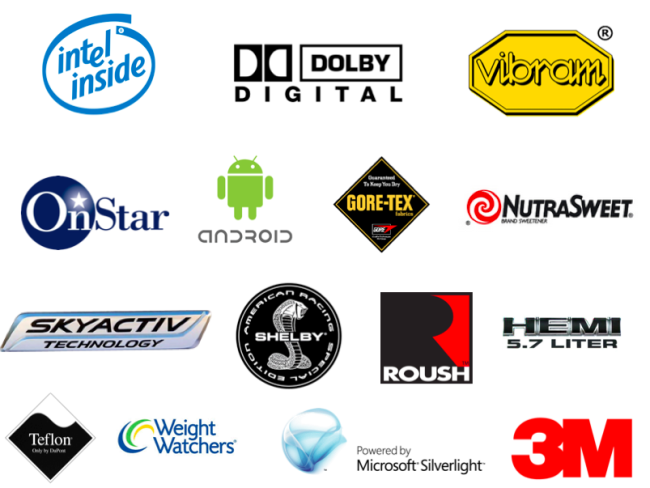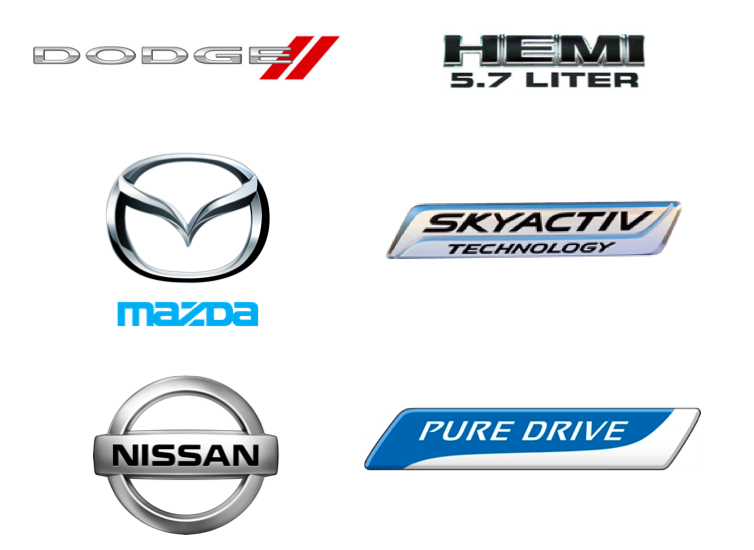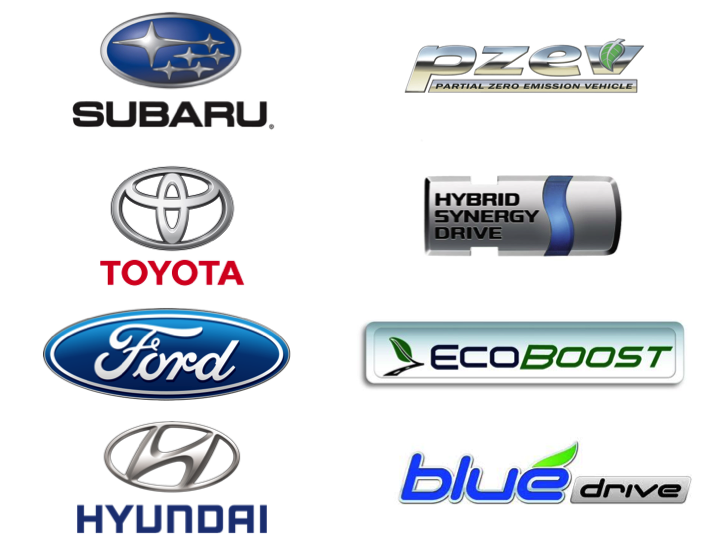Ingredient Branding is a marketing strategy where a component or an ingredient of a product or service is pulled into the spotlight and given it’s own identity. Everyone is familiar with the now famous “Intel Inside”, and it’s corresponding success. But why does it work?
It works because, in general, consumers will pay more for a branded product (name brand vs. generic). Consumers trust established brands. However, in a sea of established brands, the point of differentiation is key. And with growing customer sophistication, specifically in terms of consumer research, an ingredient branding strategy adds a layer of value to a product’s overall proposition. To connect with consumers brands need to create visible value, and by adding a branded ingredient, they can clearly show additional value.
In his book Ingredient Branding: Making The Invisible Visible, Philip Kotler praises Intel for championing the ingredient branding concept:
Intel owes its corporate success to their “Intel Inside” campaign. In the early 80’s however, when they created the ingredient branding concept, it seemed like a gamble. At the time they had a mere $500 million in sales, and yet they invested $110 million in their ingredient branding campaign over a period of three years and drove their concept and the business forward.
Intel Inside
During Intel’s marketing of “Intel Inside” they taught consumers to look for the Intel Inside logo as an assurance of quality. Consumers eventually came to see “Intel Inside” as a standard and began asking the question: “Why doesn’t your product use Intel processors?” This standard became so important that today it is one of the world’s largest co-operative marketing programs,where hundreds of computer companies license the use of the Intel Inside® logos.
Don’t Create Complexity
The ingredient must be highly differentiated in order to add value to the overall brand. This means the ingredient should have a separate name and logo and overall purpose, because the added value comes from the extra identity. First and foremost, brands should not create confusion in the market. The main brand should be well established in the market before employing an ingredient branding strategy because the consumer needs first understand the core brand and then find additional value in the ingredient. An ingredient branding strategy would be a challenge for a start-up company with little name recognition as it would cause confusion as to which brand was an ingredient of which. The ingredient needs to be subservient to the actual brand being promoted, otherwise the message can be lost.
Want to learn more about the hidden forces that shape our decisions? Read Predictably Irrational by Dan Ariely (his TED Talk on this topic has over 5.5 million views).
Auto Marketing and Ingredient Branding
We’ve seen automakers jump on the ingredient branding band wagon too. In 2004 we saw Dodge dust off the old Hemi engine and launch a marketing campaign around “Does that thing got a Hemi?” This was a throwback nodd to an engine that powered muscle cars in the fifties and was a big deal in NASCAR during the sixties and seventies. The here point is, we’re having a conversation about the engine, not the overall car. And what’s more important is that when we’re talking about Fords or Chevys we are not having a conversation about the engine.
Ingredient Branding and Commodities
Ingredient branding is a key point of differentiation for commodity products or services. In a market where any product that can be easily swapped out for another without a change in performance, an ingredient branding strategy becomes a necessary consideration. We see this all the time at gas stations. To a consumer, gas is gas. Thus the purchasing decision is based largely on the price posted on the road sign. Historically, consumers haven’t given much thought to the quality of the fuel they pump into their tanks. But companies like Citgo, Shell and Texaco all want you to think about the quality of your fuel, because if they can convince you their fuel is better quality than their competitors, they are not forced to compete on price.
Here’s what Citgo says about its TriCLEAN fuel:
TriCLEAN is an enhanced, custom-blended fuel that includes more nitrogen cleaning agents to keep vital engine parts clean for a smoother running engine that maximizes mileage and minimizes emissions.
Did you pick up on those key terms? Their fuel is a custom-blend and includes more nitrogen that not only gives you better gas mileage, but saves the environment. It also rescues kittens from trees.* In a marketing department FAQ document, Citgo claims that recent efforts to tout our quality gas have reaped promising results in perceived quality among consumers per our research. A majority of Marketers and Retailers told us they would like the brand to promote quality gasoline more. Our research shows that quality gasoline is one of the top four reasons for purchase among many consumers.
*Not supported by data.
Forcing The Question
Ingredient branding is largely successful because of the questions it forces on the competition. The concept of “Does that thing got a Hemi?” was important because of the playing field it created. The average car buyer doesn’t think to ask what type of engine is in a car and likely doesn’t know what type of engine is in their current car (go ahead, ask yourself, right now). But when consumers are prompted to ask, Dodge’s competitors didn’t have notable answers. The same goes for Intel’s competitors. Ingredient branding can be successful strategy when it creates a new check box in the consumer’s mind, a new field of evaluation the customer now must consider. What questions are you forcing on your competition?
Want to learn more about the hidden forces that shape our decisions? Read Predictably Irrational by Dan Ariely (his TED Talk on this topic has over 5.5 million views).





